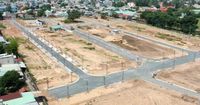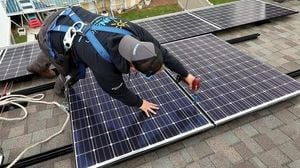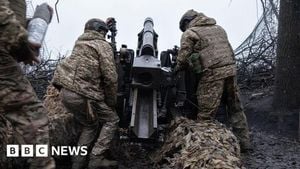Land prices around Hanoi are experiencing significant challenges, with many plots remaining unsold despite aggressive marketing by brokers. Investors are increasingly hesitant to commit, citing high prices and a lack of liquidity in the market. According to a report from the Vietnam Real Estate Brokers Association (VARS), land prices in suburban areas have surged between 30% and 80% over the past year. However, the demand has not kept pace with these increases, leading to a paradox where prices rise while sales stagnate.
In a notable example, Minh Quang, a resident of Hai Ba Trung district, has been inundated with calls from real estate brokers since early March 2025. These brokers are promoting land plots in areas such as Ha Dong, Gia Lam, Chuong My, Thanh Tri, Ba Vi, Son Tay, and Thach That. One broker, Thach, has been particularly persistent, calling Quang 2-3 times daily and sending messages via Zalo about various land opportunities.
Thach offered Quang a 61m² plot near a student market in Thach That for 3 billion VND, claiming it was priced 300 million VND below the market average. He touted the plot's proximity to a major road and its potential for business due to nearby amenities. Despite the enticing offer, Quang declined, stating that the price was still too high and that he had two other plots that had not sold. "I’m not in a rush to buy more, especially with prices being what they are right now," he remarked to VTC News.
Continually pushing the sales agenda, Thach introduced another plot in the Hoa Lac high-tech zone, measuring 108.9m², priced at 22 million VND per square meter. He claimed the location's value would skyrocket due to upcoming infrastructure projects, including the Metro Line 5, set to begin construction this year.
Another broker, Nguyen Thi Phuong, also contacted Quang about potential plots in Son Tay town, offering two corner lots due to the owner's urgent need to settle bank debts. The prices for these plots had decreased by nearly 200 million VND in the past two months, with the owner even offering a gold tael as an incentive for buyers.
Despite these efforts, the overall market sentiment remains cautious. A recent report indicated that while there are waves of price increases in various regions, the number of interested buyers has not increased accordingly, and in some cases, has even decreased. Dr. Nguyen Van Dinh, Chairman of the VARS, noted that the real estate market around Hanoi has seen prices escalate dramatically from May 2024 to March 2025, particularly following announcements of administrative mergers that have prompted investors to seek properties in areas expected to become administrative centers.
Investors are adopting a defensive stance, waiting for clearer signals from the market before making purchases. Dr. Nguyen Minh Phong, an economist, pointed out that the continuous rise in land prices has led many investors to hesitate. They are observing the market closely, especially after hearing about potential mergers, which have shifted their focus to neighboring provinces where prices remain more affordable.
"This period is fraught with risks, especially for new investors. Real estate prices are influenced by various factors, including infrastructure, location, job demand, and local economic conditions," Phong warned. He cautioned investors to be wary of local planning changes that could lead to purchasing land at inflated prices, particularly in areas experiencing rapid price growth.
Despite the challenges, some areas are still seeing stable demand. For instance, wards like Linh Nam, Vinh Hung, and Dai Kim have maintained reasonable liquidity due to ongoing demand from homebuyers. However, even districts known for their high activity, such as Dong Da and Hoang Mai, are witnessing substantial declines in transaction volumes. In March, the Dong Da district recorded a staggering 70% drop in sales compared to the previous month.
According to data from One Mount Group, a market research firm, Hanoi recorded approximately 18,300 real estate transactions in the first quarter of 2025, marking a 14% decrease from the same period last year. This decline is largely attributed to the sharp drop in residential land transactions, particularly in inner-city areas. Even traditionally high-liquidity areas like Dong Da, Hoang Mai, Gia Lam, and Long Bien are not immune to this downward trend.
As the market struggles, many homeowners are holding firm on their asking prices, unwilling to negotiate significantly. "The biggest challenge is that buyers are waiting for prices to fall further before committing," said Thanh Do, a broker specializing in inner-city residential land. This stalemate is causing transactions to stall, as both buyers and sellers remain in a state of uncertainty.
In light of these conditions, investors are increasingly shifting their focus to suburban areas. Many are looking to capitalize on lower prices and the potential for future growth as infrastructure developments progress. According to Le Dinh Chung, General Director of SGO Homes, the Hanoi market has shown signs of stagnation, prompting investors to seek opportunities outside the capital. "Investors are now looking to accumulate land in suburban regions rather than engaging in short-term speculation," he noted.
As the landscape continues to evolve, it remains to be seen how these trends will affect the future of real estate in Hanoi and its surrounding areas. Investors and potential buyers alike must navigate a complex market filled with both risks and opportunities, making informed decisions crucial for success.





